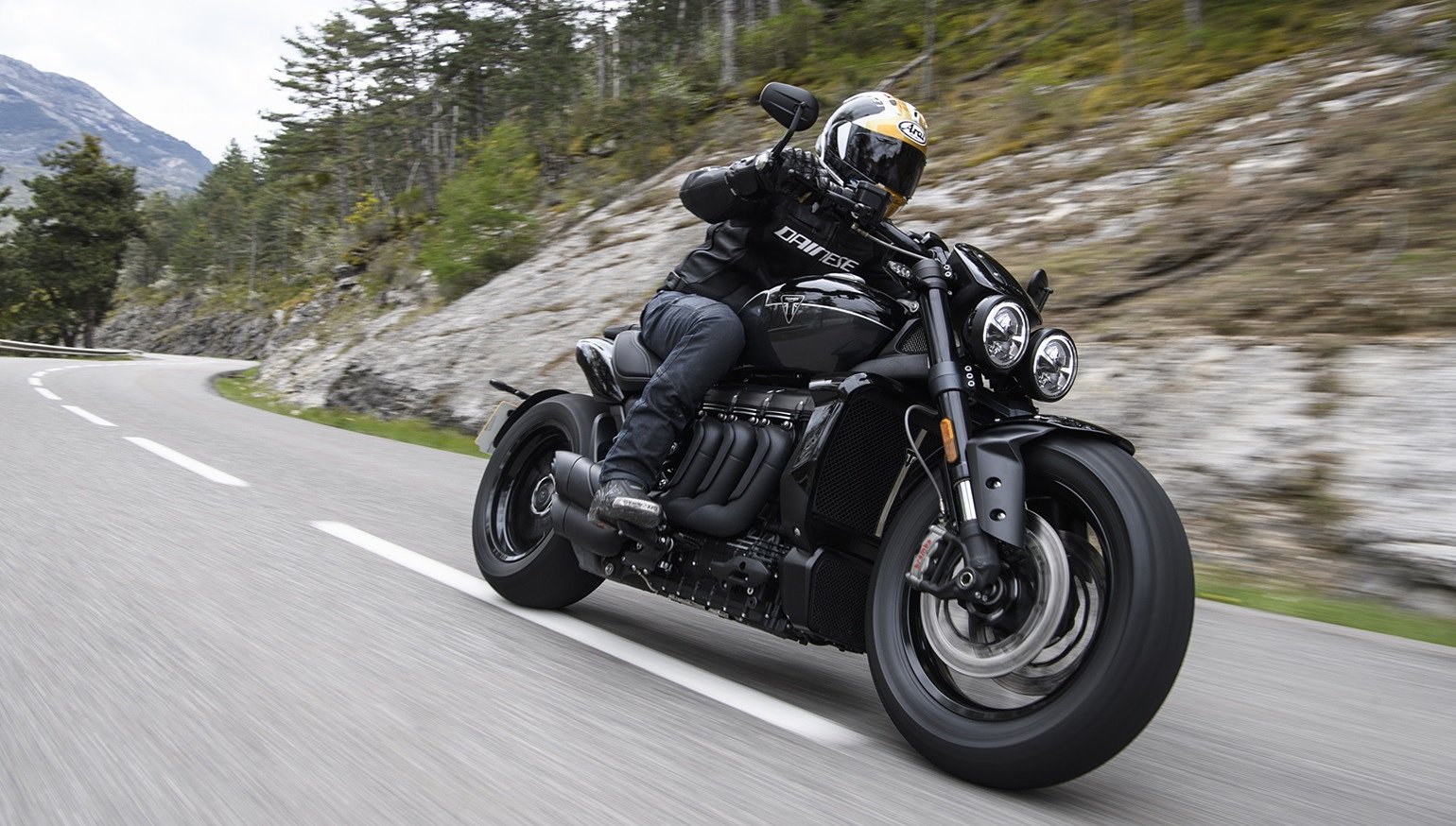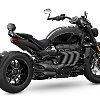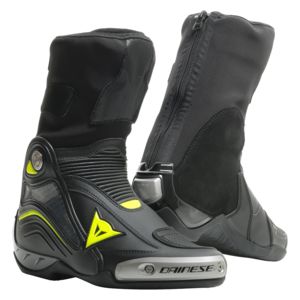"So, do you think anyone actually compares a bunch of bikes and decides to buy a Rocket 3? It's a bike you just want, right? It's not a rational, considered purchase…" That's how I recall the dinner-table chat at the launch of the Triumph Rocket 3 back in Tenerife, Spain, in 2019.
Now, five years later, the global moto-journo fraternity is in Cannes, France, casually pondering the same topics, except this time with Triumph's new-for-2024 Rocket 3 Storm R and GT models contrasted against the French Riviera in the background instead. The essence of the Rocket 3 hasn't changed, but some of the details have.
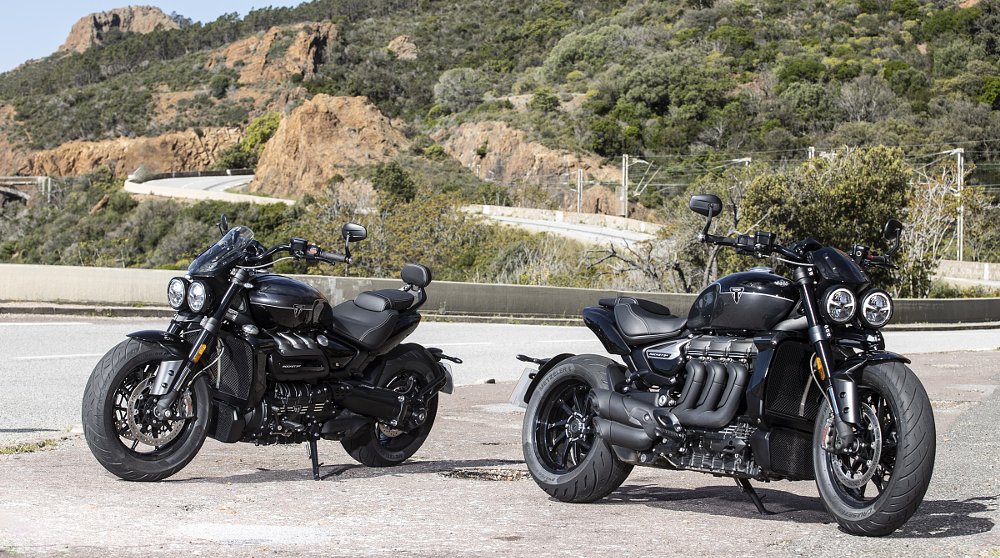
What's new on the 2024 Triumph Rocket 3
The changes for this iteration of the Rocket 3 are as significant as they are brief, so let's get straight to the heart of it: Triumph has sent the Rocket 3 to the gym, again, and it's returned with 15 extra horses crammed into the humungous 2,458 cc three-cylinder powerplant. Those extra 15 represent a 9% hike, taking the total power output from 165 to 180 horsepower, and at the very same time, the Rocket 3 takes the throne as Hinckley's most powerful machine once again. To boot, peak power comes in 1,000 rpm later at 7,000 rpm and the redline is raised by 500 rpm to 8,000 rpm... at which point the engine is ingesting 156 liters of air every single second. That's a lot.
Beyond the rise in power, peak torque is increased by a smidgeon from 163 to 166 foot-pounds at 4,000 rpm, because 163 wasn’t quite enough, obviously. An updated wheel design sheds 2.2 pounds of unsprung mass, and altered exhaust internals ensure Euro5+ emissions compliance, as well as a marginally improved claimed mpg figure (35.6 now versus 34.5 previously). Wet weight stays essentially the same at 705 pounds for the R and 699 pounds for the GT, although we have to take Triumph's word for that because it has switched from providing dry weights to wet weights since figures were last published for the Rocket 3 models.
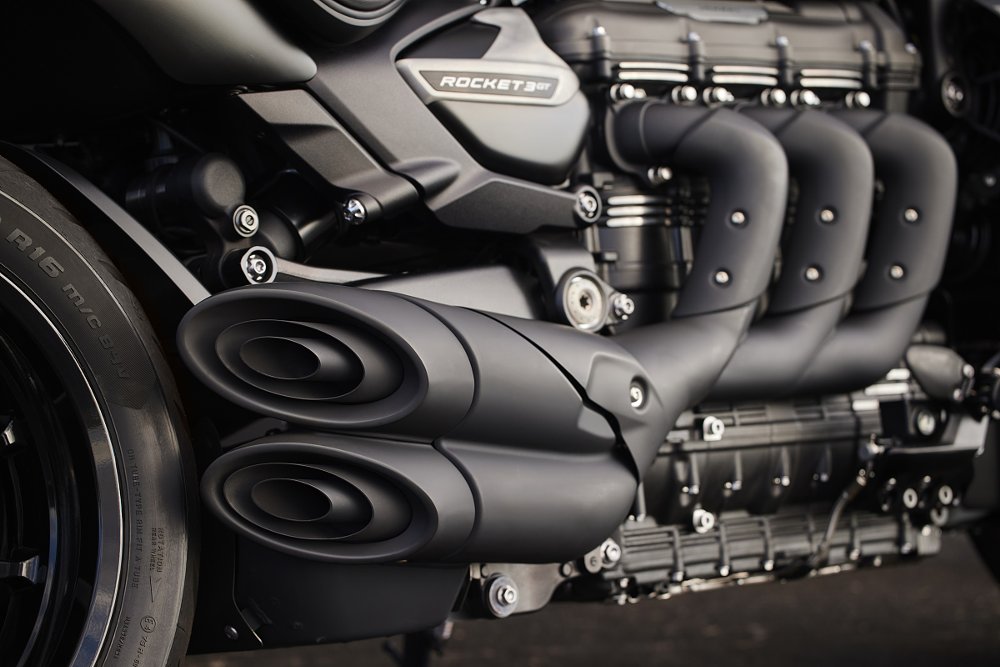
The rest of the changes are entirely cosmetic, and on that note, both bikes have received copious amounts of black paint thrown at almost everything you can point a finger at, from the headlights to the exhaust headers, footpegs and so on. There's barely a surface in sight that's not black anymore. Red, blue, and black (Carnival Red, Satin Pacific Blue, and Granite, respectively) are your options for the paint job on the tank, and even those shades are fairly dark. Anyone with a keen eye for detail will spot that the tank colorways subtly invert between the R and GT models, which is a handy way to identify each model from a distance. And yes, you can technically turn an R into a GT and vice versa should you really want to: The extra ride height in the R is found entirely in the seat foam (30.5 inches for the R versus 29.5 inches for the GT). All in, I think the decision to take inspiration from Henry Ford adds a classier look and feel, although I do think the brushed exhaust headers of the past looked pretty epic.
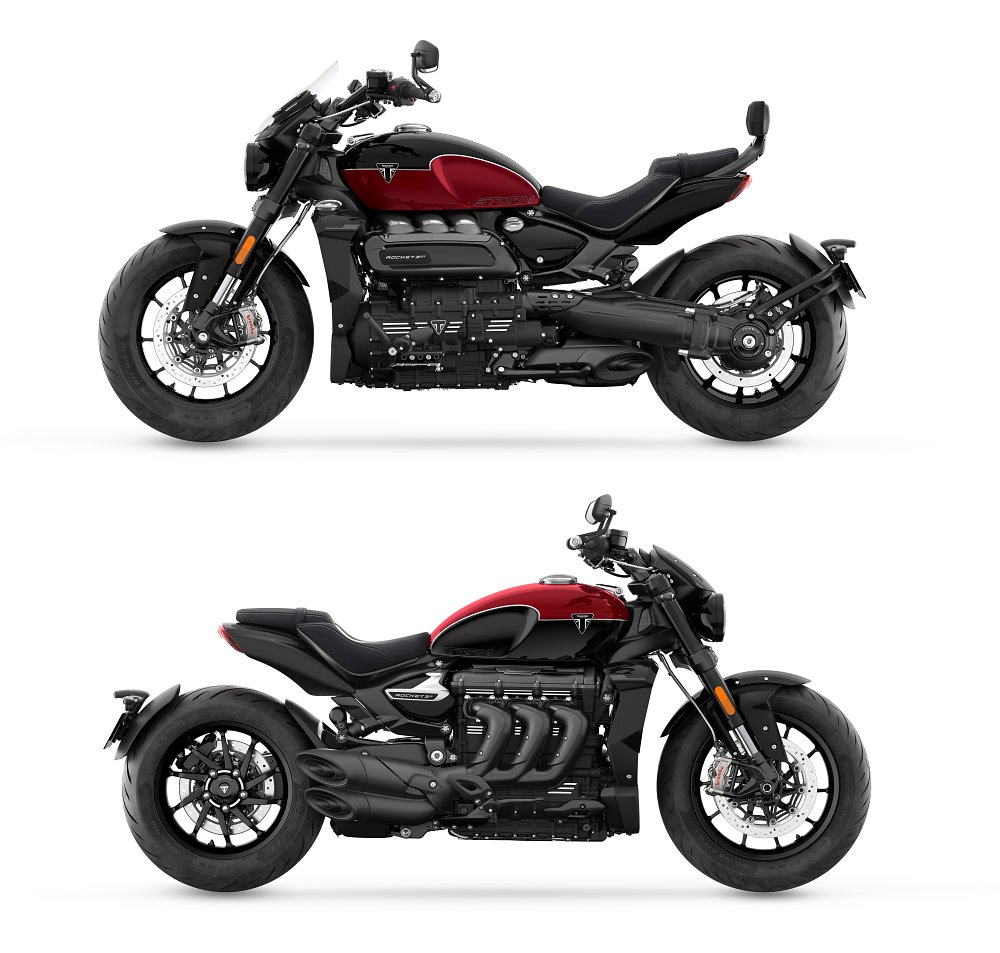
If we stand back and summarize at this point then, mechanically we're looking at more or less the same machines as we saw in 2019, except with more power, lighter wheels, improved emission figures, and a tweaked, more stealthy, darker look. The GT retains its more laid-back setup with three-position laterally adjustable forward-mount footpegs, swept-back (by five inches) handlebar, a lower ride height, and a pillion seat backrest. By contrast, the R has three-position vertically adjustable mid-mounted pegs, a higher ride height, and a flatter, more forward handlebar setup. One other point of note, Metzeler Cruisetec tires (150/80 front, 240/50 rear) replace the previous Avon Cobras, due only to Avon discontinuing the product.
The rest of the bells and whistles we're already familiar with remain as is: a six-axis IMU powering cornering-sensitive traction control and anti-lock brakes, hill hold, backlit switch gear, four riding modes, keyless ignition, slipper clutch with assist, and cruise control. Heated grips remain an accessory item on the R (standard on the GT), and a quickshifter is optional on both. Brake and suspension setups remain identical too: a rebound- and compression-adjustable 47 mm Showa fork, and a remote reservoir Showa RSU, which is adjustable for the same settings. Dual Brembo Stylema M4.30 calipers sit up front and bite down on 320 mm discs, and are linked to a M4.32 rear caliper which brings up the rear with a 300 (!) mm disc. Not too long ago, that rear caliper was half of the braking setup on the front end of a Ducati Panigale 959…
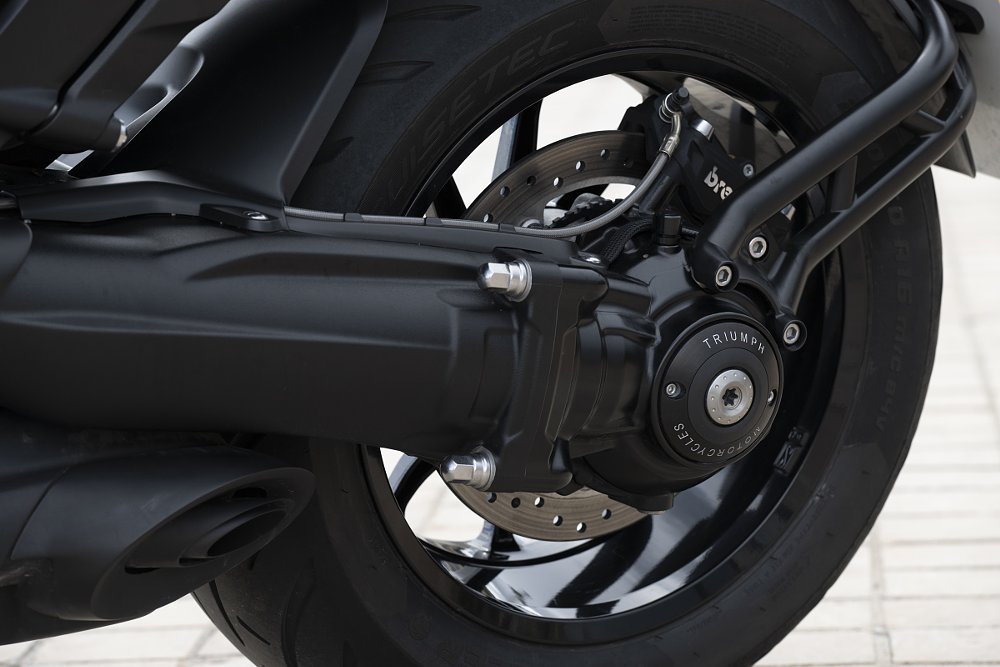
It's a lot of bike, and it's a lot of MSRP too — $24,995 for the R, and $27,795 for the GT. For your notes, the previous incarnations came in at $21,900 and $22,600 respectively, which is probably a fair increase, taking into account five years of inflation.
With all of that in mind, 'twas time to head out for a 140-mile ride which, as luck would have it, was the only dry day in a rainy week, and would include a decent variety of riding scenarios from crawling in city traffic, through to highways and the tight-and-twisty tarmac on the Route Napoléon.
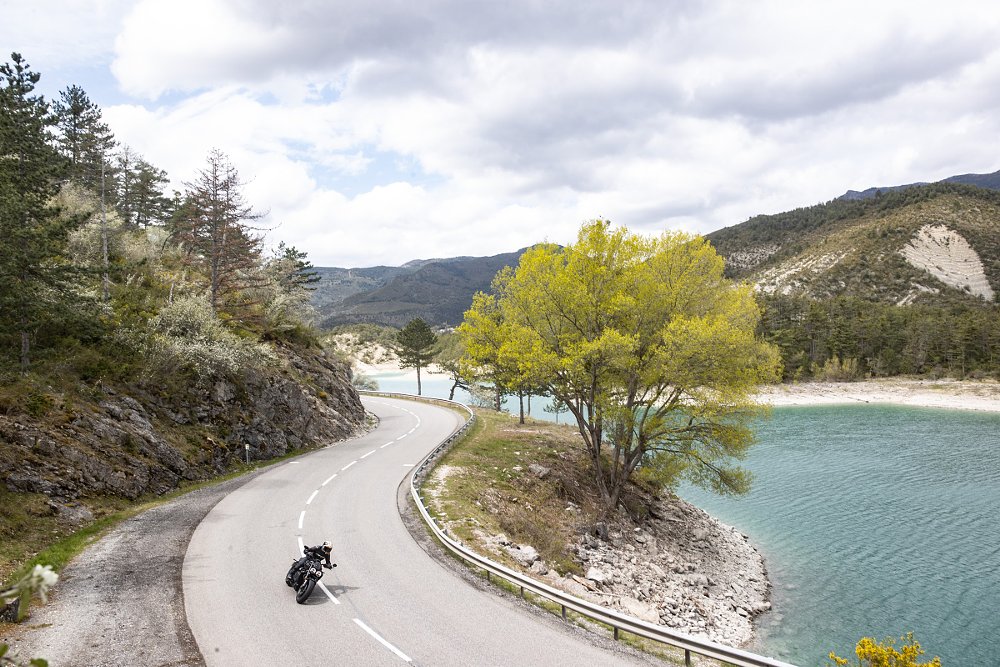
Riding the 2024 Triumph Rocket 3
Simply approaching a Rocket 3 is daunting enough, let alone firing one into life… although I quickly reminded myself that last time I did this I was launching a TFC edition up the hill at Goodwood Festival of Speed, in the wet, in front of all the crowds and cameras. Get over it, you'll be fine, I told myself. And I was, because honestly, it's really not that bad of a beast to contend with, even at stop-start speeds around town, thanks to the weight sitting so low down. Triumph boasts that the crank spins only nine inches above ground. Hill hold comes in as reassuringly handy at almost every stop light or situation where you're stationary for more than a fleeting moment, and aside from a lot of heat coming from the headers (which are in super close proximity to your right thigh) it's a nice place to be. The Rocket 3 does, however, clatter over drain covers, bumps and potholes — but that’s to be expected; there's 700 pounds to suspend, not much travel, and as such, the suspension has got to be pretty firm.
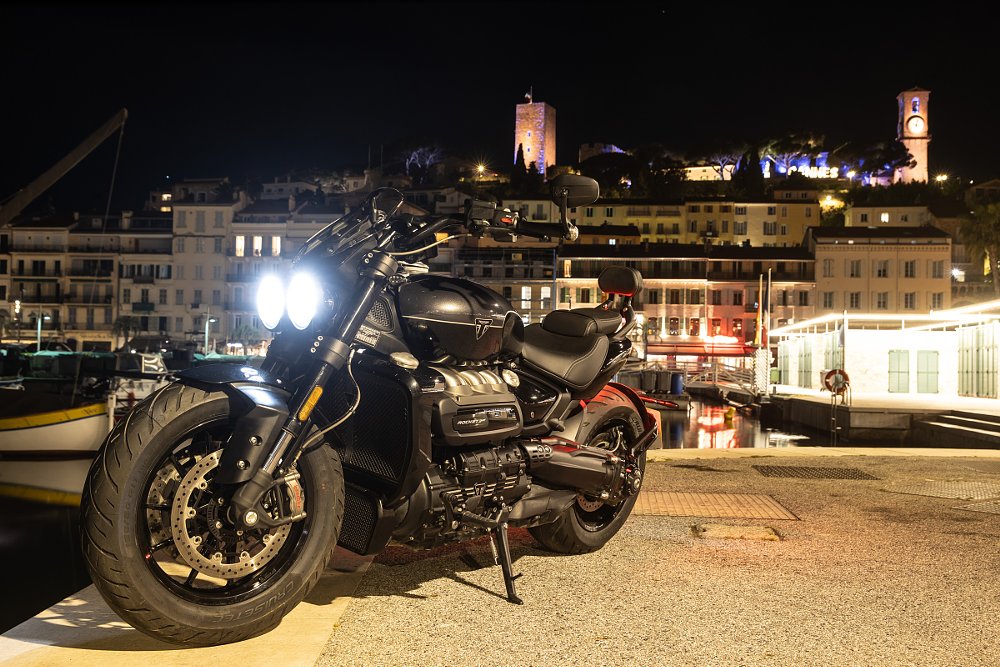
This is all helped massively by a really nice, super-light clutch action and, as with all Triumphs for a long while now, sublime fueling. Triumph has clearly invested huge amounts of time and effort into perfecting fueling and throttle response and it can even be seen on the dyno graphs for these new Rocket 3 models, where power and torque curves have been visibly smoothed out between around 2,750 rpm and 3,750 rpm. The gearbox is smooth, and is happy to shift sans clutch in either direction, but it will not be too happy if you throw shifts at it as furiously as you might a KTM 890 Duke R. I would personally not bother with the optional quickshifter, but only because you don't actually need to change gears all that often; it'll pull away in second like water off a duck's back.
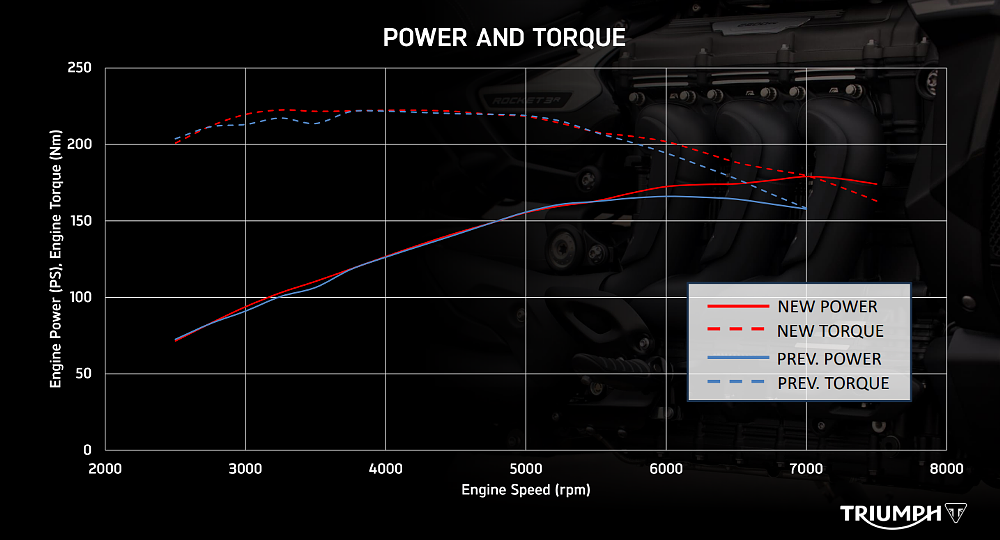
It's out on more open roads where the Rocket 3 experience gets beyond the opening scenes. I find it a conundrum of a machine to ride because with so much torque on offer pretty much everywhere in the rev range, you have to completely change how you use the gearbox to make any sense of it. Essentially, you spend a while getting it completely wrong, and then once everything clicks you can start to exploit it — not changing down gears before corners, and not changing up afterwards, either, because most of the time two gears higher than you'd think is all you need, thanks to the gobs (and gobs upon gobs) of smooth, endless torque on offer.
It isn't just the gearbox to adjust to, it's also a case of changing how you think about corners. The Rocket 3 is the very definition of planted once you've got it settled into a corner, and it seems to almost pull itself down into the tarmac, too. It's rock solid and feels great once it's there, but — and it's a big but — you have to get it right first time, because any kind of mid-corner adjustment brings all 700 pounds back into the equation. In essence, it's a game of committing to a speed and a line and digging in — and if you get it wrong, accepting it and riding it out til the next corner shows up. A tricky task on Route Napoléon's twists and turns, but endlessly gratifying when you get it just right.
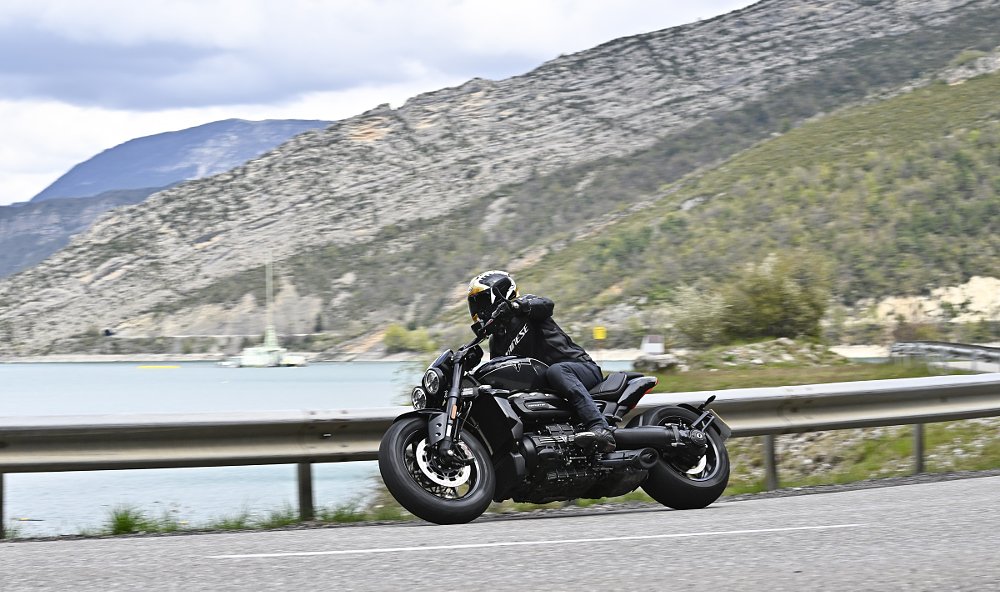
The next trait that materializes as you figure out how to get it through a corner is just how energetic and dynamic the triple engine is. You would not guess at its capacity from how it feels, but the deep tone, and the glugs and blubs on the over-run do give it away a little. It is not a slow motor by any stretch of the imagination: It spins up fast and is all too happy to rev all the way to its soft redline without any hesitation. Peak torque comes in relatively high, and peak power is also way up the range, so this is not a lazy plodder — it wants to rev and wills you into doing just that. You don't ride this machine lazily unless you consciously decide to. It's much more dynamic than you'd ever think, and it's rewarding when ridden with attitude. Does the extra 15 horsepower make any real difference, though? Not really, especially when it's pretty much at the redline, but it's nice to know it's there — and besides, it's bragging rights at the bar, right?
Highway stretches are dispatched effortlessly and in short order at barely above idle in sixth gear — cruise control at the ready, if you desire — and aside from rain mode, which feels like an entirely good idea when the asphalt is wet, road mode is perfectly adequate at all other times. Sport mode (with TC off) lets the rear wheel spin up with worrying frequency, and will catch you off guard if you're not paying attention, especially on cold tires.
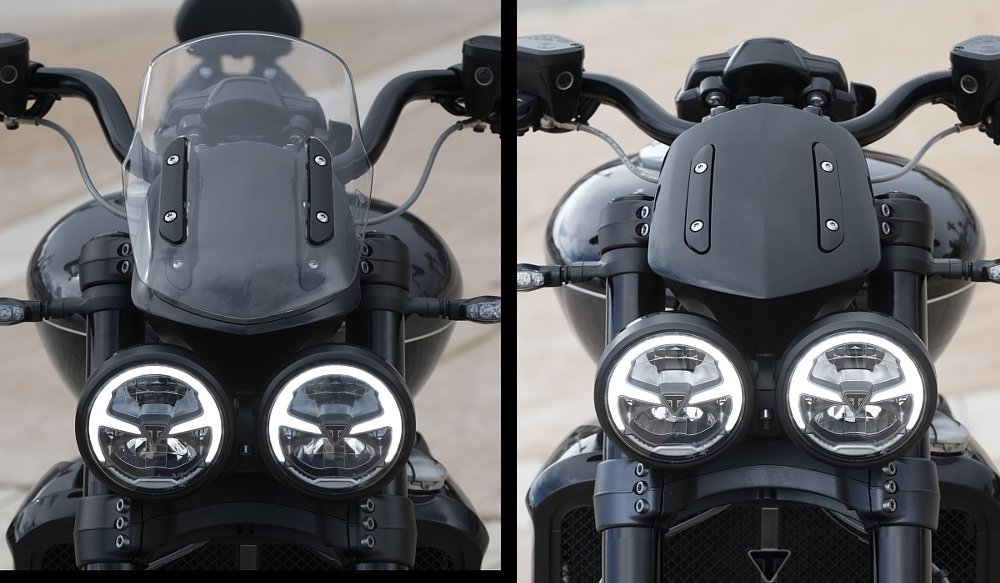
Wind protection isn't great on either model, and my five-foot, 10-inch frame prefers the R over the GT, but only because my hamstrings tend to get aggravated after half an hour or so with my feet set so far out front. Ideally I'd probably move the R's pegs back an inch or so, but that's my personal preference.
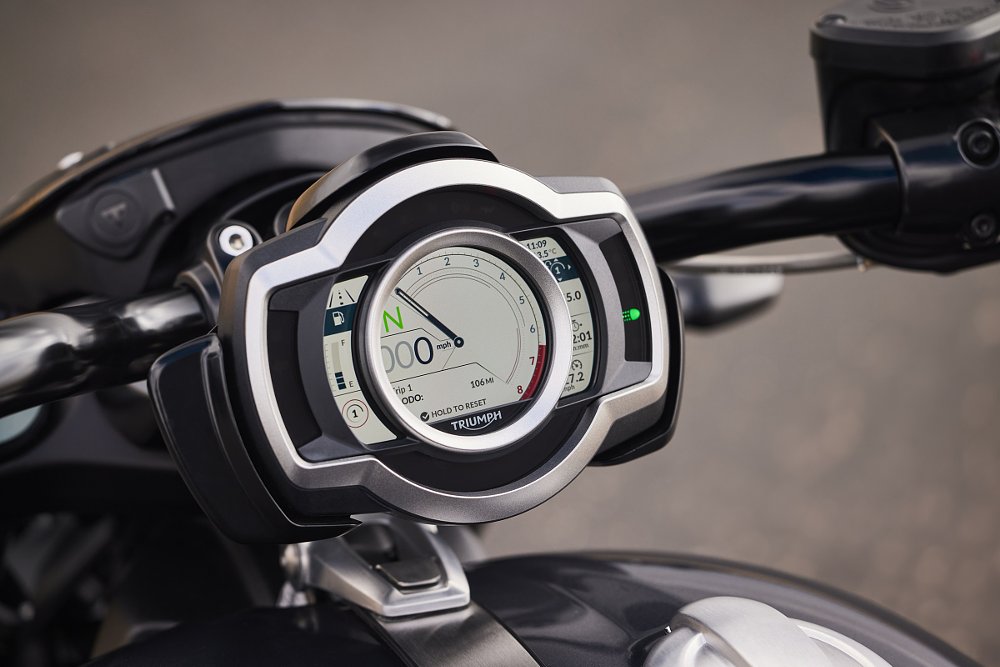
If I have to pick fault with the Rocket 3 Storm models, it'd be the dashboard. I recall Zack was a fan back in 2019, but I disagree: I think it's a fairly poor effort on an otherwise premium machine. There are no less than seven different segments comprising of a mix of TFT and backlit LED symbols, the refresh rate isn't brilliant, and generally I find it confusing and unintuitive to use through the fiddly thumb-joystick which sits far too close to indicator slider on the left switch cluster. That joystick is a complaint I have about many Triumph models that possess it; I think a lesson could be learned from Ducati and BMW who both manage big, crisp, fast, intuitive displays with a simple set of handlebar controls on almost every bike they ship, and definitely on models at or near this price point.
Going further, the GT model is a "GT" in name and little lot else. The pillion seat is tiny — on both models, actually — and the luggage capacity is small, plus the entire bike offers little in the way of weather or wind protection. Tank range is not exactly GT-esque, either. Our ride came in at 34.1 mpg (U.S.), which works out at about 140 miles to a tank (and 100 to the warning light). The differences between the R and GT are definitely more of a style and riding position thing, rather than actual ability. If I'm going to take the GT by its claim and do a big ol' tour, the very least I'd want is a big screen up front.
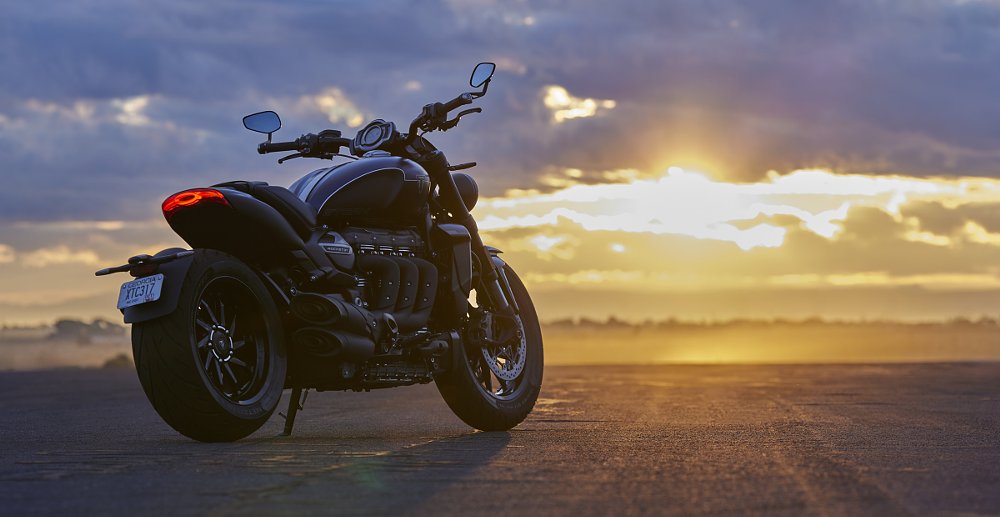
Is the Rocket 3 the motorcycle you want?
I think, however, none of my complaints would stand in the way of anyone seriously considering a purchase. Nothing is perfect. The Rocket 3's natural competitors are Ducati's Diavel V4 and Harley-Davidson's FXDR and possibly Fat Bob, but none are quite in the same circle — back to the dinner-table chat, the Rocket 3 is the star and sole attender of its own party.
Looking back on my ride, a few things keep popping back into my mind. The first is that the Rocket 3, in either guise, has no right to be as good as it is. Sure, there's a point where you can no longer hide the long wheelbase, giant tires, and colossal weight, but it's still a hugely compelling machine to pilot and play around with when you look at it in context. Everything is turned way past 11 on the dial and yet it still manages to fully surpass expectations.
The second is the throttle connection: You just never need to think about it or work around it; the engine just does exactly what your mind wants it to. Last but not least, it's a wonderful machine to look at from any angle, with crazy amounts of presence, which along with the engine's ability is exactly why you'd clear a space in your garage and fill it with a Rocket 3.
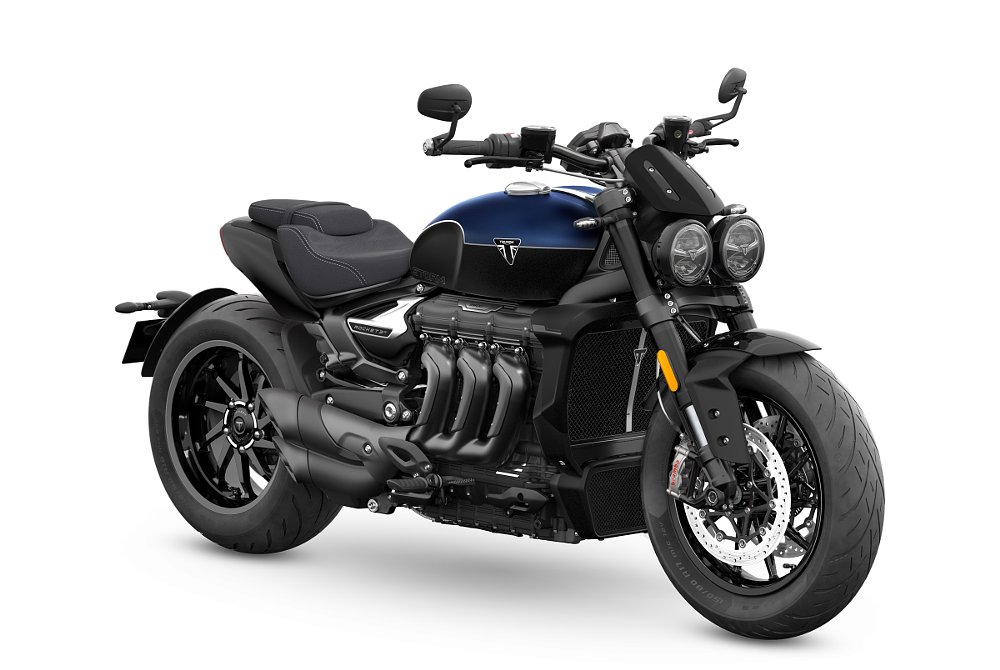
The Rocket 3 was, and still is, a huge statement, and it makes the statement even better in 2024 with its bigger power figure and meaner look. What better way to celebrate the Rocket's 20th birthday?
| 2024 Triumph Rocket 3 Storm R and GT | |
|---|---|
| Price (MSRP) |
$24,995 Storm R $25,795 Storm GT |
| Engine | 2,458 cc, liquid-cooled, 12-valve, inline triple |
|
Transmission, final drive |
Six-speed, shaft |
| Claimed horsepower | 180 @ 7,000 rpm |
| Claimed torque | 166 foot-pounds @ 4,000 rpm |
| Frame | Aluminum |
| Front suspension | Showa 47 mm inverted fork, adjustable for compression and rebound damping; 120 mm (4.7 inches) of travel |
| Rear suspension | Show shock, remotely adjustable for preload; 107 mm (4.2 inches) of travel |
| Front brake | Dual Brembo M4.30 Stylema four-piston calipers, 320 mm discs with ABS |
| Rear brake | Brembo M4.32 Stylema four-piston caliper, 300 mm disc with ABS |
| Rake, trail | 27.9 degrees, 134.9 mm (5.3 inches) |
| Wheelbase | 1,677 mm (66 inches) |
| Seat height |
773 mm (30.4 inches) Storm R 750 mm (29.5 inches) Storm GT |
| Fuel capacity | 4.76 gallons |
| Tires | Metzeler Cruisetec, 150/80VR17 front, 240/50VR16 rear |
| Claimed weight |
317 kilograms (699 pounds) Storm R 320 kilograms (705 pounds) Storm GT |
| Available | Now |
| Warranty | 24 months |
| More info | triumphmotorcycles.com |




